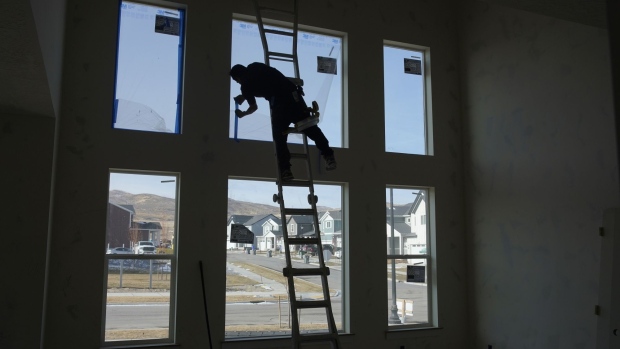Fancy Apartment Rentals for Paris Olympics See Poor Demand and Price Cuts
Locals who’d hoped to turn a big profit by renting out their posh apartments are now slashing prices by 30%-60%.
Latest Videos
The information you requested is not available at this time, please check back again soon.
Locals who’d hoped to turn a big profit by renting out their posh apartments are now slashing prices by 30%-60%.
The kingdom must overcome a conservative image and concern about human rights. Visit the desert oasis town of AlUla to understand the challenge.

Jury selection was completed Friday for Donald Trump’s first criminal trial, setting the stage for opening arguments Monday in a New York case accusing the former president of falsifying business records to conceal a sex scandal before the 2016 election.

Higher-than-expected interest rates amid persistent inflation are perceived as the biggest threat to financial stability among market participants and observers, according to the Federal Reserve.

Fifth Third Bancorp jumped the most in four months, leading bank stocks higher, with Chief Executive Officer Tim Spence predicting that income from lending has bottomed out.
May 18, 2021
, Bloomberg News

U.S. housing starts fell by more than forecast in April, suggesting that supply-chain constraints and rising materials costs continue to hold builders back.
Residential starts decreased 9.5 per cent in April to a 1.57 million annualized rate, according to government data released Tuesday. The median estimate in a Bloomberg survey called for a 1.7 million pace.
Construction has been held back in recent months by supply chain constraints as well as higher materials costs, particularly for lumber. That said, strong demand for residential real estate, fueled by low borrowing costs, is expected to bolster the housing market in the coming months.
Backlogs continued to mount as the number of homes authorized for construction but not yet started rose 5 per cent from the prior month, the data showed. Applications to build, a gauge of future construction, rose 0.3 per cent to an annualized 1.76 million, exceeding the pace of starts.
“Too much demand, while a good thing, will eventually slow production and building,“ Jennifer Lee, senior economist at BMO Capital Markets, said in a note. “That is happening now and contributing to price pressures.“
While Tuesday’s data was softer than expected, there are still signs that the housing market is strong as housing starts and permits remain elevated. Earlier this week, a measure of homebuilder sentiment held steady and continue to top pre-pandemic levels.
Single-family starts fell 13.4 per cent in April to an annualized 1.09 million. Overall, construction declined in the Midwest and the South, while it rose in the Northeast and the West.